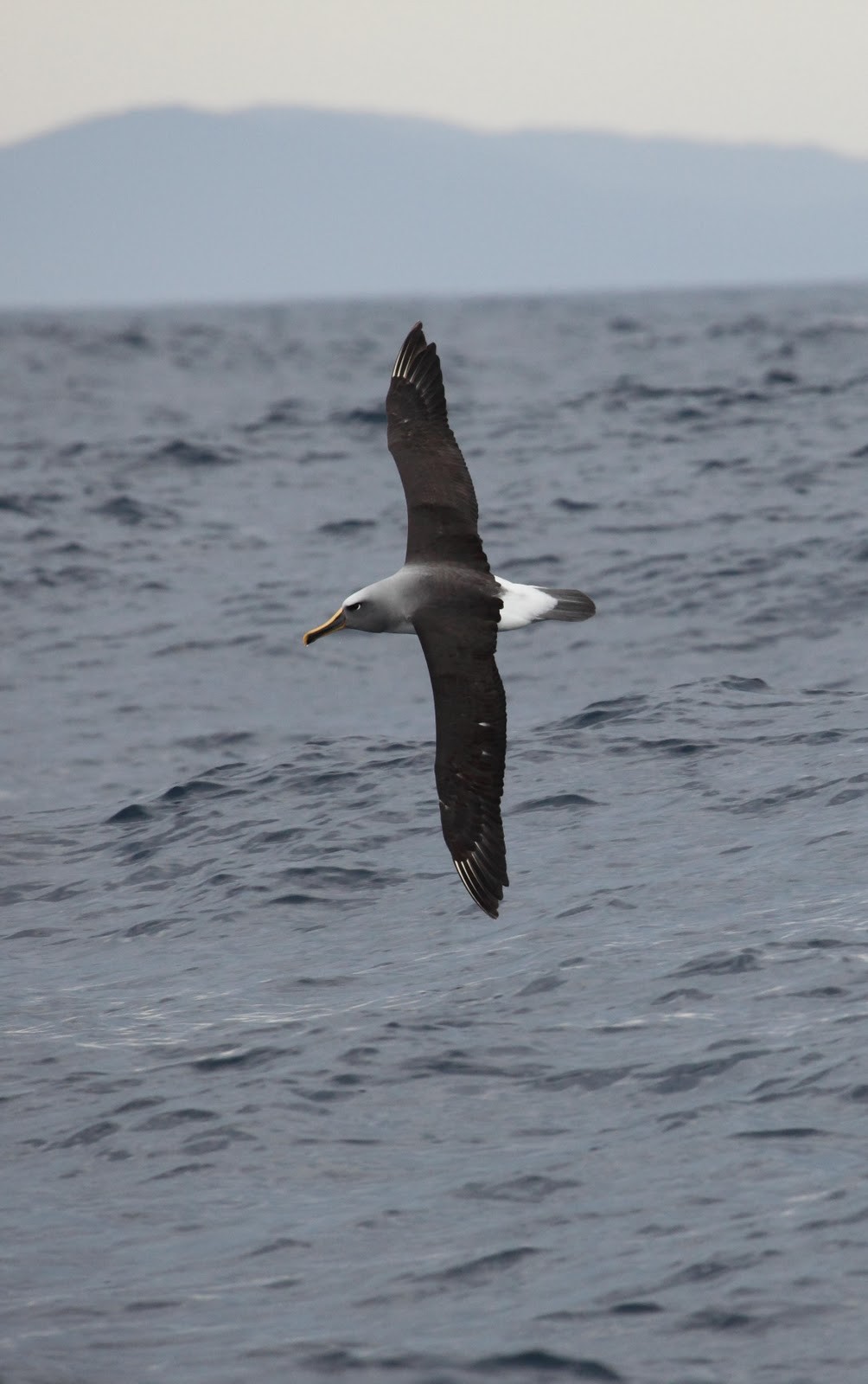Buller's Albatross
A species of Mollymawks, Also known as Northern Buller's Mollymawk, Southern Buller's Mollymawk Scientific name : Thalassarche bulleri Genus : Mollymawks
Buller's Albatross, A species of Mollymawks
Also known as:
Northern Buller's Mollymawk, Southern Buller's Mollymawk
Botanical name: Thalassarche bulleri
Genus: Mollymawks
Content
Description General Info
 Photo By http://www.comebirdwatching.blogspot.com/ , used under CC-BY-SA-3.0 /Cropped and compressed from original
Photo By http://www.comebirdwatching.blogspot.com/ , used under CC-BY-SA-3.0 /Cropped and compressed from original Description
Buller's albatross averages 79 cm (31 in). It has a silver-grey forehead, a grey head and throat. It has a black patch around the eyes with a white crescent behind and below the eye. Its back, upperwing, and tail are dark grey, and its rump and underparts are white. Its underwing is white with a black tip, with a broad sharply demarcated dark band at the leading edge. Its bill is large and black with yellow on the upper mandible, and the tip. The juvenile has a darker head and a brown bill. 
Size
81 cm
Nest Placement
Cliff
Feeding Habits
Buller's Albatross primarily consumes squid, fish, and crustaceans, supplemented with tunicates and octopus. Exhibiting foraging prowess, buller's Albatross employs surface-seizing techniques and may feed diurnally or nocturnally. Noted for a diverse palate, this bird is adapted to opportunistic feeding across vast oceanic expanses.
Habitat
Buller's Albatross typically occupies marine and pelagic habitats, favoring open ocean environments far from mainland coastlines. These birds are usually observed in southern temperate oceanic regions, predominantly between the latitudes of 40°S and 50°S. During breeding season, they prefer remote islands, nesting on grassy slopes or among rocks and sparse vegetation, often utilizing coastal terraces or understory forest clearings for their nests.
Dite type
Piscivorous
General Info
Feeding Habits
Bird food type
Species Status
It was formerly classified as a vulnerable species by the IUCN. But new research has shown it to be not as rare as it was believed. Consequently, it was downlisted to near threatened status in 2008. It has an occurrence range of 16,100,000 km (6,200,000 sq mi) and a breeding range of 4 km (1.5 sq mi). According to a 1999 estimate, there are 64,000 birds and there are 31,939 breeding adults. These are located as follows: 8,877 pairs on the Snares Islands, 4,912 pairs on Solander Island, 16,000 pairs on Forty-fours Island, 2,130 pairs on Big and Little Sister, 20 pairs on Rosemary Rock in the Three Kings group. The Snares Islands population has been increasing, but lately not as much as in the 1970s, whereas the Solander Island population which was stable from 1985 to 1996 has now shown about an 18% increase. The survival rate of adults on the Snares Islands increased to 95.5% and brooding success rate was 70.8%, whereas on Big and Little Sister, adult survival rate is 93.5% and the brooding success rate is between 57-60%. Buller's albatross is the most common bycatch from longline fisheries out of New Zealand, and, even though net-sonde cables were banned in 1992, squid trawlers still catch them. Finally, weka Gallirallus australis was introduced to Big Sister and may take eggs and chicks. Most islands are legally protected, except for the Chatham Islands colonies which are on private land. 

 Photo By http://www.comebirdwatching.blogspot.com/ , used under CC-BY-SA-3.0 /Cropped and compressed from original
Photo By http://www.comebirdwatching.blogspot.com/ , used under CC-BY-SA-3.0 /Cropped and compressed from original Scientific Classification
Phylum
Chordates Class
Birds Order
Albatrosses and Petrels Family
Albatrosses Genus
Mollymawks Species
Buller's Albatross